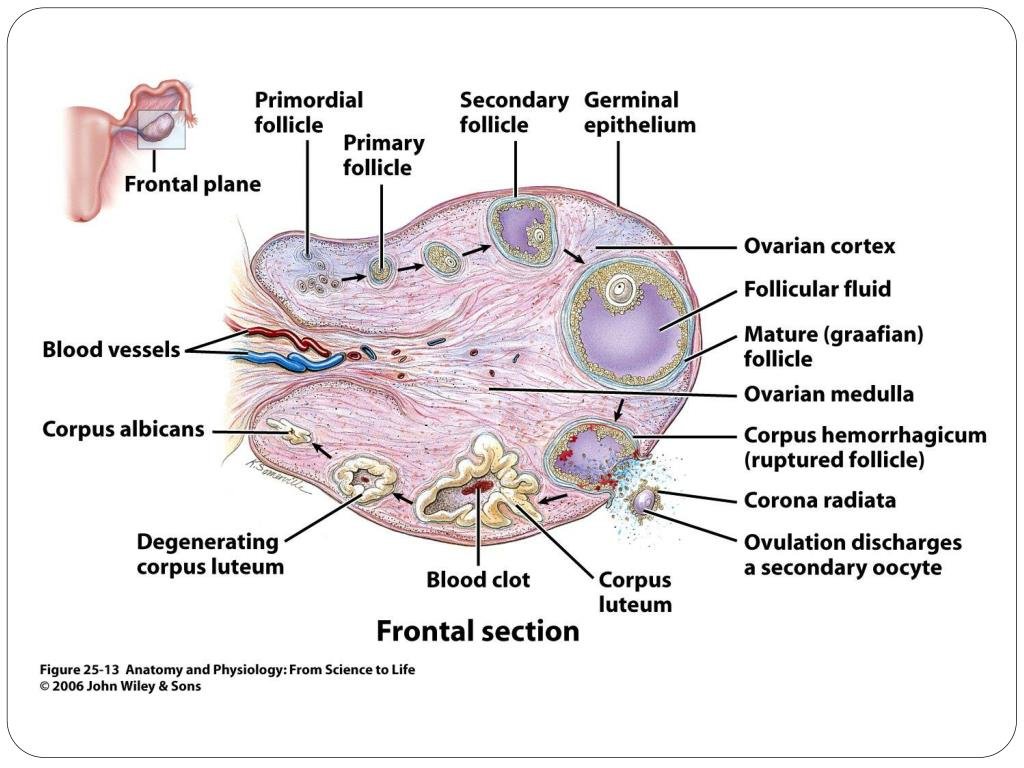Ovary and fallopian tube – The course is designed for the basic understanding of anatomical structures and physiological functions of human body, musculoskeletal system, digestive system, respiratory system; cardiovascular system; urinary system, endocrine system, reproductive system, nervous system, hematologic system, sensory organs, integumentary system, and immune system.The aim of the course is to acquire knowledge and skills regarding anatomy and physiology.
Ovary and fallopian tube
Ovaries
The ovaries (egg receptacles) are paired organs that produce secondary oocytes (cells that develop into mature ova, or eggs, following fertilization) and hormones, such as progesterone and estrogens (the female sex hormones), inhibin, and relaxin. The ovaries arise from the same embryonic tissue as the testes, and they are the size and shape of unshelled almonds. Both ovary lies on each side of the pelvic cavity, held in place by ligaments. Weight is about 10-20 gm and about 3-5 cm in length.
- Ovaries produce female sex hormones such as estrogen and progesterone as well as ova (commonly called “eggs”), the female gametes.
- Ova are produced from oocyte cells that slowly develop throughout a woman’s early life and reach maturity after puberty.
- Each month during ovulation, a mature ovum is released. The ovum travels from the ovary to the fallopian tube, where it may be fertilized before reaching the uterus.

Fallopian tube :-
The Fallopian tubes, also known as oviducts, uterine tubes, and salpinges (singular salpinx). There are two uterine (fallopian) tubes that extend laterally from the uterus and transport the secondary oocytes from the ovaries to the uterus. It also provides the sites where fertilization occurs.
Each tube is about 10-11.5 cm in length and divided into four morphological parts:
1. The interstitial or Junctura or uterotubal junction: Which passes through the wall of the uterus and has the narrowest lumen of 1 mm.

2. The Isthmus: This is the straight and narrowest part of the fallopian tube. Length about 2.5 cm.
3. The Ampulla: This is the longest and largest part of the tube and also the most extensive. It provides the place for fertilization to take place. Length about 5 cm.
4. The Infundibulum or pre ampulla: This is the expanded funnel shaped portion which opens into the peritoneal cavity.
Length about 2.5 cm.
Its margins are surrounded by a number of fringe like processes, known as the fimbriae. Egg enters this portion and is transported by ciliated cells to the ampulla for fertilization. One of he langest fimbriae lies in contact with the ovary and is called the fimbria ovarica.

The fallopian tube is made of three layers:
- Mucosa these are folded walls with ciliated cells along them.
- Muscularis externa
- Serosa
Functions of fallopian tube :-
1. The uterine tubes serve as duct to convey the ovum from the ovary to the uterus by peristalsis and ciliary movement.
2. It provides the place for fertilization to take place.
3. After fertilization, the zygote is propelled into the uterus for implantation.
(Ref:- R.E. Bailey, Obstetric and Gynaecological Nursing, 1st ed, P-270-271 + R.S. Winwood Sear’s Anatomy, 6th ed,P-284,285 + P.Evelyn, 16th P-314-315+ Ross & Wilson, 9th P-443)
Read more:
